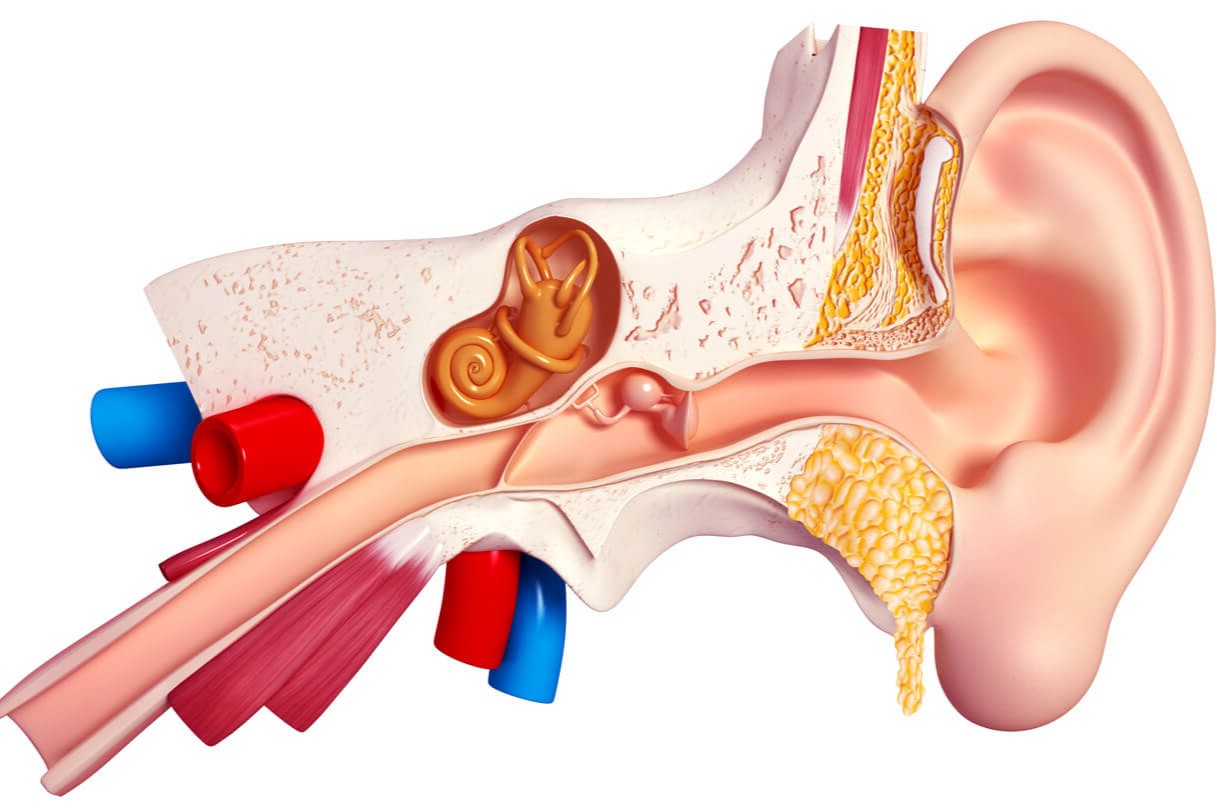
How does the auditory system work? The auditory system is a complex network that allows us to hear and process sounds. Sound waves enter the ear canal, hitting the eardrum, which vibrates. These vibrations travel through three tiny bones in the middle ear called the ossicles. The vibrations then reach the cochlea, a fluid-filled structure in the inner ear. Inside the cochlea, hair cells convert these vibrations into electrical signals. These signals travel via the auditory nerve to the brain, where they are interpreted as sounds. This intricate process enables us to enjoy music, communicate, and stay aware of our surroundings. Understanding this system can help us appreciate the marvel of hearing.
The Basics of the Auditory System
Understanding the auditory system begins with knowing its fundamental components and functions. Here are some essential facts to get you started:
-
The auditory system consists of the outer ear, middle ear, inner ear, and the auditory nerve. Each part plays a crucial role in hearing.
-
Sound waves enter the ear canal and hit the eardrum, causing it to vibrate. These vibrations are the first step in the hearing process.
-
The middle ear contains three tiny bones called ossicles (malleus, incus, and stapes). They amplify the vibrations from the eardrum.
-
The inner ear houses the cochlea, a spiral-shaped organ filled with fluid. The cochlea converts vibrations into electrical signals.
-
Hair cells in the cochlea are sensory receptors. They transform mechanical vibrations into nerve impulses.
How We Hear
Hearing is a complex process that involves multiple steps. Let's break down how we hear:
-
Sound localization is the ability to determine where a sound is coming from. The brain uses differences in the time and intensity of sounds reaching each ear to pinpoint the source.
-
The auditory nerve carries electrical signals from the cochlea to the brain. This nerve is essential for transmitting sound information.
-
The brain's auditory cortex processes sound signals. Located in the temporal lobe, it interprets sounds and helps us understand speech and music.
-
Frequency and pitch are crucial aspects of sound. Frequency refers to the number of sound wave cycles per second, while pitch is how high or low a sound seems.
-
Loudness is determined by the amplitude of sound waves. Larger amplitudes produce louder sounds.
Interesting Facts About Hearing
The auditory system has some fascinating features and capabilities. Here are some intriguing facts:
-
Humans can hear frequencies ranging from 20 Hz to 20,000 Hz. This range decreases with age.
-
The smallest bone in the human body is the stapes, located in the middle ear. It measures just 0.1 inches.
-
Ears never stop working, even while sleeping. The brain, however, filters out most sounds to allow rest.
-
Earwax protects the ear canal by trapping dust and debris. It also has antibacterial properties.
-
Binaural hearing allows us to perceive depth and direction of sound. This ability helps in noisy environments.
Hearing Loss and Protection
Hearing loss is a common issue, but there are ways to protect and preserve hearing. Here are some important facts:
-
Noise-induced hearing loss is preventable. Avoiding loud noises and using ear protection can help.
-
Prolonged exposure to sounds above 85 decibels can cause hearing damage. Common sources include concerts and heavy machinery.
-
Hearing aids amplify sounds for those with hearing loss. Modern devices are discreet and highly effective.
-
Cochlear implants are electronic devices that provide a sense of sound to people with severe hearing loss. They bypass damaged parts of the ear.
-
Regular hearing check-ups can detect issues early. Early intervention can prevent further damage.
Fun and Surprising Facts
The auditory system has some surprising and fun aspects. Here are a few to ponder:
-
Some animals have extraordinary hearing. Bats, for example, use echolocation to navigate in the dark.
-
The ear's shape helps collect sound waves. The outer ear, or pinna, funnels sound into the ear canal.
-
Music can affect mood and emotions. Listening to music releases dopamine, a feel-good neurotransmitter.
-
White noise can help people sleep by masking disruptive sounds. It creates a consistent auditory environment.
-
Hearing is linked to balance. The inner ear contains the vestibular system, which helps maintain equilibrium.
-
Babies can hear sounds in the womb. By the third trimester, they can recognize their mother's voice.
-
Hearing aids date back to the 17th century. Early versions were simple ear trumpets made from animal horns.
The Marvel of Our Ears
Our auditory system is truly fascinating. From the outer ear capturing sound waves to the inner ear translating them into signals our brain can understand, every part plays a crucial role. The eardrum vibrates, the ossicles amplify, and the cochlea deciphers. It's a complex yet seamless process that allows us to enjoy music, communicate, and stay alert to our surroundings.
Understanding these 27 facts not only highlights the importance of hearing but also underscores the need to protect it. Loud noises, infections, and aging can all impact our hearing health. Simple steps like using ear protection and regular check-ups can make a big difference.
So next time you hear your favorite song or the laughter of a loved one, take a moment to appreciate the incredible journey those sounds took to reach you. Our ears are more than just organs; they're gateways to a richer, more connected life.
Was this page helpful?
Our commitment to delivering trustworthy and engaging content is at the heart of what we do. Each fact on our site is contributed by real users like you, bringing a wealth of diverse insights and information. To ensure the highest standards of accuracy and reliability, our dedicated editors meticulously review each submission. This process guarantees that the facts we share are not only fascinating but also credible. Trust in our commitment to quality and authenticity as you explore and learn with us.
